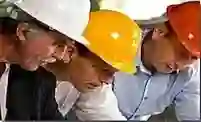Green Building - Rating Systems for Existing Buildings
How it Work!
- Register first and log into your account. Study and take the quiz for FREE until passed.
- After passing the quiz, follow the page, pay for the course and print your certificate.
Course Summary
LEED for Existing Buildings (LEED for Existing Buildings) maximizes operational efficiency while minimizing environmental impacts. As a leading-edge, consensus-based system for certifying green building performance, operations, and maintenance, LEED for Existing Buildings provides a road map for property managers, portfolio owners, and service providers to drive down operational costs, while increasing occupant productivity in an environmentally responsible manner.
The LEED for Existing Buildings Rating System is a set of voluntary performance standards for the sustainable upgrades and operation of buildings not undergoing major renovations. It provides sustainable guidelines for building operations, periodic upgrades of building systems, minor space use changes and building processes.
LEED for Existing Buildings addresses exterior building site maintenance programs, efficient/optimized use of water and energy, purchasing of environmentally preferred products, waste stream management and ongoing indoor environmental quality (IEQ). In addition, LEED for Existing Buildings provides sustainable guidelines for whole-building cleaning/maintenance, recycling programs and systems upgrades to improve building energy, water, IEQ and materials use.
Learning Objectives
LEED for Existing Buildings is a voluntary performance standard for sustainable operations and maintenance of buildings and provides guidelines for sustainable upgrade over time.
LEED for Existing Buildings provides an important opportunity for building owners to lead the way in reducing the environmental impact of buildings.
Course Author
US Green Building Council
Review the quiz before studying the course.Certificate of completion of the course
This course comes with a multiple-choice quiz. You can view the quiz and take the quiz if you are logged in your account. You can take the quiz for this online PDH course as many times until passed. The passing grade is 70% and above. After you pass the quiz simply follow the page, to pay for the course and print your certificate instantly. A copy of the certificate and receipt for this course will always be in your account.Acrobat Reader is required to view this document. Click here to download a free copy of Acrobat Reader.
This online PDH course can also be used as a continuing education course for the following.

